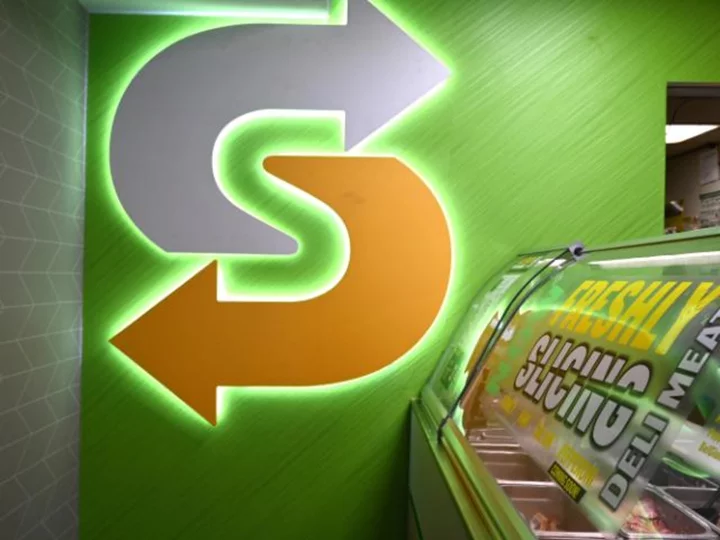Subway is the largest restaurant chain in the US and one of the most recognizable fast food brands in the world. But in recent years, it has struggled.
Thousands of Subway stores have closed since 2016. The company has had to coax back eaters who switched allegiances to fast-growing rivals like Firehouse Subs and Jersey Mike's. Sales grew sluggish. It didn't help that perhaps the company's best-known product, the $5 footlong, generally didn't turn a profit.
Subway scrambled to make fixes: Adding freshly sliced meat earlier this month was the most recent one. But that's just the latest in a major overhaul of the 58-year-old brand designed to attract both loyal fans -- and a corporate buyer.
In February, the family-owned business put itself up for sale. A price tag wasn't disclosed, but Subway could be valued at more than $10 billion according to the Wall Street Journal. If that price is reached, it would be one of the biggest deals in the fast food industry since Inspire Brands bought Dunkin' for $11.3 billion in October 2020.
Subway said the announcement of a deal could come as early as this month.
Changing offerings and strategy
So, what did they do, was it enough — did it work? Apparently, it did, to an extent.
Sales at Subway's North America stores that have been open at least a year rose 7.8% in 2022 as compared to 2021, which Subway said exceeded its projections by more than $700 million (it didn't reveal specific numbers). Subway has doubled down on pushing orders to its app, too, helping its digital sales.
However, average yearly sales at Subway US restaurants are still much lower compared to its sandwich-making rivals. Data from QSR Magazine reveals that its three main competitors (Jersey Mike's, Firehouse Subs and Jimmy John's) pull in about $1 million per unit, with an average Subway location raking in less than $500,000.
Here's what else it has changed:
Store design
Subway's turnaround efforts date back to 2016, when it rolled out a refreshed logo ditching its italicized font for the brighter, cleaner one currently seen across its roughly 40,000 global restaurants. (The curving arrow signs in its stores remained, to signal eating on the go.) That was tough year for Subway because for the first time in the company's history, it closed more US stores than it opened the year before.
In 2017, Subway debuted a new, more modern look for its locations featuring brighter lighting, sleeker furniture and displays of vegetables behind employees, a visual cue to emphasize the chain's focus on freshness. It also added ordering kiosks with modernized payment options, like Apple Pay.
Still, only about half of its roughly 20,000 US restaurants were remodeled, with another 3,600 scheduled to be revamped this year.
New loyalty program
In 2018, Subway introduced a new rewards program called MyWay to win back customers. Like other programs, discounts are given out the more customers spend and collect tokens. They also get surprises, including free cookies and chips.
Subway is relaunching the loyalty program later this year.
Revamped menu
Two years ago, after a vocal push from franchise owners, Subway kicked off its largest initiative to coax eaters back. Nearly a dozen of its offerings and ingredients, like bacon, cheeses and bread, received massive makeovers, and new sandwiches were added to the menu.
A year later, it launched an even more extensive revamp of its offerings by redesigning the menu to push people to pre-made creations rather than overwhelming them (and employees) with customizations.
In addition to a more neatly organized menu board, Subway added numbers and new names to speed up service. The new sandwiches, called the "Subway Series" boosted sales, the chain said, and now account for 20% of sales.
And this week, it rolled out freshly sliced meat — a major shift from Subway's previous method of having the meat sliced at its factories before being delivered to its stores. This marked the last major change Subway initiated since the "Eat Fresh Refresh" campaign it launched in 2021.
Adding freshly sliced meat "felt like the natural step that we needed to get back to and address," Trevor Haynes, president for Subway's North America operations, previously told CNN. He hinted that another round of changes could come soon, as well as a buyer for the chain.

